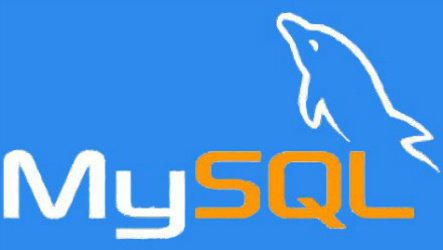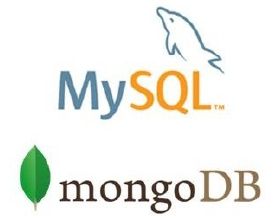 Database
Database
 Mysql Tutorial
Mysql Tutorial
 How to use cache optimization? Summarize cache optimization example usage
How to use cache optimization? Summarize cache optimization example usage
How to use cache optimization? Summarize cache optimization example usage
This article is the continuation of the first cache optimization article in the MySQL optimization series. It introduces all aspects of cache optimization in more detail. I hope you will like MySQL. There are caches everywhere inside. I will come back when I read the source code of MySQL. Detailed analysis of how cache is used. This part mainly covers various explicit cache optimizations: query cache optimization result set cache sorting cache join connection cache table cache Cache and table structure definition cache Cache table scan cache buffer MyISAM index cache buffer log cache read-ahead mechanism delayed table and temporary table 1 , Query cache optimization The query cache not only caches the query statement structure, but also caches the query results. Within a period of time, if it is the same SQL, the results will be read directly from the cache to improve the efficiency of data search. But when the data in the cache is inconsistent with the data in the hard disk, the cache will become invalid. mysql> show variables like '%query_cache%'; +----------------
1. MySQL Optimization Detailed Explanation of Cache Optimization (2)

#Introduction: This article is the continuation of the first cache optimization article in the MySQL optimization series. It will introduce all aspects of cache optimization in more detail. I hope You may like
2. MySQL optimization cache optimization detailed explanation (1)

Introduction: The most frequently asked question is about MySQL database performance optimization, so I recently plan to write a series of articles on MySQL database performance optimization, hoping to help junior and intermediate MySQL DBAs and This is helpful to other friends who are interested in MySQL performance optimization.
3. 21 Best MySQL Performance Optimizations

##Introduction: 1. Optimize your queries for query caching. Most MySQL servers have query caching turned on. This is one of the most effective ways to improve performance, and it's handled by the MySQL database engine. When many of the same queries are executed multiple times...
4. CI framework database query cache optimization method_php example
Introduction: This article mainly introduces the CI framework database query cache optimization method, and combines the example form with a more detailed analysis of the opening, closing, use, clearing and other related operation skills of the cache in the CI framework. For precautions, friends in need can refer to
##5.Introduction to PHP skills: Use APC cache to optimize PHP programs ##Introduction: Introducing PHP skills: using APC cache to optimize PHP programs
6.
Using APC cache to optimize PHP programs_PHP tutorialIntroduction: Use APC cache to optimize PHP programs. Alternative PHP Cache (APC) is a free and public optimized code cache for PHP. It is used to provide a free, open and robust framework for caching and optimizing PHP intermediate code. APC official
7.
laravel installation zend opcache accelerator tutorial_PHP tutorialIntroduction: laravel installation zend opcache accelerator Tutorial. The laravel installation zend opcache accelerator tutorial takes the article page as an example. Through chrome packet capture, the waiting time reaches 147ms. In fact, before caching optimization, this page has about 4 sql statements,
8.
Laravel installation zend opcache accelerator tutorial, laravelopcache_PHP tutorialIntroduction: laravel installation zend opcache accelerator tutorial, laravelopcache. Laravel installation zend opcache accelerator tutorial, laravelopcache Taking the article page as an example, through chrome packet capture, the waiting time reaches 147ms. In fact, before caching optimization, this page is about
9. PHP Tips: Use APC Cache to Optimize PHP Programs
Introduction: PHP Tips: Use APC Cache to Optimize PHP Programs
10. Use APC cache to optimize PHP programs
Introduction: Use APC cache to optimize PHP programs. Alternative PHP Cache (APC) is a free and public optimized code cache for PHP. It is used to provide a free, open and robust framework for caching and optimizing PHP intermediate code. APC official
[Related Q&A recommendations]:
java - Is there a mature solution for mongodb with redis cache?
The above is the detailed content of How to use cache optimization? Summarize cache optimization example usage. For more information, please follow other related articles on the PHP Chinese website!

Hot AI Tools

Undresser.AI Undress
AI-powered app for creating realistic nude photos

AI Clothes Remover
Online AI tool for removing clothes from photos.

Undress AI Tool
Undress images for free

Clothoff.io
AI clothes remover

Video Face Swap
Swap faces in any video effortlessly with our completely free AI face swap tool!

Hot Article

Hot Tools

Notepad++7.3.1
Easy-to-use and free code editor

SublimeText3 Chinese version
Chinese version, very easy to use

Zend Studio 13.0.1
Powerful PHP integrated development environment

Dreamweaver CS6
Visual web development tools

SublimeText3 Mac version
God-level code editing software (SublimeText3)

Hot Topics
 1664
1664
 14
14
 1423
1423
 52
52
 1318
1318
 25
25
 1269
1269
 29
29
 1248
1248
 24
24
 MySQL's Role: Databases in Web Applications
Apr 17, 2025 am 12:23 AM
MySQL's Role: Databases in Web Applications
Apr 17, 2025 am 12:23 AM
The main role of MySQL in web applications is to store and manage data. 1.MySQL efficiently processes user information, product catalogs, transaction records and other data. 2. Through SQL query, developers can extract information from the database to generate dynamic content. 3.MySQL works based on the client-server model to ensure acceptable query speed.
 Explain the role of InnoDB redo logs and undo logs.
Apr 15, 2025 am 12:16 AM
Explain the role of InnoDB redo logs and undo logs.
Apr 15, 2025 am 12:16 AM
InnoDB uses redologs and undologs to ensure data consistency and reliability. 1.redologs record data page modification to ensure crash recovery and transaction persistence. 2.undologs records the original data value and supports transaction rollback and MVCC.
 MySQL: An Introduction to the World's Most Popular Database
Apr 12, 2025 am 12:18 AM
MySQL: An Introduction to the World's Most Popular Database
Apr 12, 2025 am 12:18 AM
MySQL is an open source relational database management system, mainly used to store and retrieve data quickly and reliably. Its working principle includes client requests, query resolution, execution of queries and return results. Examples of usage include creating tables, inserting and querying data, and advanced features such as JOIN operations. Common errors involve SQL syntax, data types, and permissions, and optimization suggestions include the use of indexes, optimized queries, and partitioning of tables.
 MySQL's Place: Databases and Programming
Apr 13, 2025 am 12:18 AM
MySQL's Place: Databases and Programming
Apr 13, 2025 am 12:18 AM
MySQL's position in databases and programming is very important. It is an open source relational database management system that is widely used in various application scenarios. 1) MySQL provides efficient data storage, organization and retrieval functions, supporting Web, mobile and enterprise-level systems. 2) It uses a client-server architecture, supports multiple storage engines and index optimization. 3) Basic usages include creating tables and inserting data, and advanced usages involve multi-table JOINs and complex queries. 4) Frequently asked questions such as SQL syntax errors and performance issues can be debugged through the EXPLAIN command and slow query log. 5) Performance optimization methods include rational use of indexes, optimized query and use of caches. Best practices include using transactions and PreparedStatemen
 Why Use MySQL? Benefits and Advantages
Apr 12, 2025 am 12:17 AM
Why Use MySQL? Benefits and Advantages
Apr 12, 2025 am 12:17 AM
MySQL is chosen for its performance, reliability, ease of use, and community support. 1.MySQL provides efficient data storage and retrieval functions, supporting multiple data types and advanced query operations. 2. Adopt client-server architecture and multiple storage engines to support transaction and query optimization. 3. Easy to use, supports a variety of operating systems and programming languages. 4. Have strong community support and provide rich resources and solutions.
 MySQL vs. Other Programming Languages: A Comparison
Apr 19, 2025 am 12:22 AM
MySQL vs. Other Programming Languages: A Comparison
Apr 19, 2025 am 12:22 AM
Compared with other programming languages, MySQL is mainly used to store and manage data, while other languages such as Python, Java, and C are used for logical processing and application development. MySQL is known for its high performance, scalability and cross-platform support, suitable for data management needs, while other languages have advantages in their respective fields such as data analytics, enterprise applications, and system programming.
 How does MySQL index cardinality affect query performance?
Apr 14, 2025 am 12:18 AM
How does MySQL index cardinality affect query performance?
Apr 14, 2025 am 12:18 AM
MySQL index cardinality has a significant impact on query performance: 1. High cardinality index can more effectively narrow the data range and improve query efficiency; 2. Low cardinality index may lead to full table scanning and reduce query performance; 3. In joint index, high cardinality sequences should be placed in front to optimize query.
 MySQL: From Small Businesses to Large Enterprises
Apr 13, 2025 am 12:17 AM
MySQL: From Small Businesses to Large Enterprises
Apr 13, 2025 am 12:17 AM
MySQL is suitable for small and large enterprises. 1) Small businesses can use MySQL for basic data management, such as storing customer information. 2) Large enterprises can use MySQL to process massive data and complex business logic to optimize query performance and transaction processing.



